The debate about stretching—dynamic versus static, when and how long, and so on—may never be solved.
The debate about stretching—dynamic versus static, when and how long, and so on—may never be solved.
- Does stretching really work?
- Does static stretching work?
- Will it make me more flexible?
- Will it make me less sore after a workout?
- What are the most important muscles to stretch?
- And on, and on…
Regardless of the conflicting, and constantly changing science about stretching, I’m personally a big believer that it’s useful both to make you more flexible and will help to make you less sore the next day. At least this has been my experience.
I was a national level gymnast as a kid. We stretched and stretched and stretched to the point of being able to do what we called the “oversplits”—meaning the splits beyond 180 degrees—and when I quit gymnastics I stopped stretching. And guess what? After a handful of years, I could no longer do the splits.
In my adulthood, I have found static stretching after a big lifting session does make me considerably less sore the next day.
And while I often see people taking the time to do couch stretches for their quads, pigeon stretches for their glutes, and various seated hamstring stretches after a training session, there are many parts of the body we often neglect to give love, like our wrists, lats, and calves.
Here are seven stretches to do after lifting sessions for the areas of the body we often forget about.
1. Half Kneeling Lat Stretch
Position yourself close to a post and get into a lunge—or a half kneeling position. With your outside arm, reach over your head and grab the post. Place your inside hand below that. Then lean away from the post and into your outside lat.
Hold for 1 minute per side. I find this stretch particularly useful after a big pulling session.
2. Bottom of the Feet Massage
The bottom of our feet take a beating, and we often pay no attention to them. It’s time we do.
I like massaging them by rolling them out on a lacrosse ball. Spend a minute or two on each foot, putting as much pressure into the ball as you feel comfortable with. This should feel good as opposed to painful.
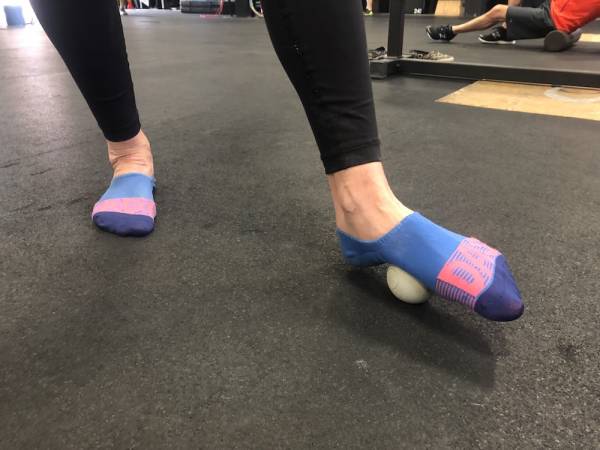
3. Simple Wrist Stretches
It’s especially important to give your wrists some attention after a training session where you spent a lot of time in the rack position—cleans, jerks, strict presses, front squats, front rack lunges, etc—or after doing handstand holds, handstand push-ups, or even push-ups. These stretches can also be done before your training session to help warm your wrists up.
Spend a good 30 seconds in each of these two positions and make sure you keep your elbows straight on both of these.
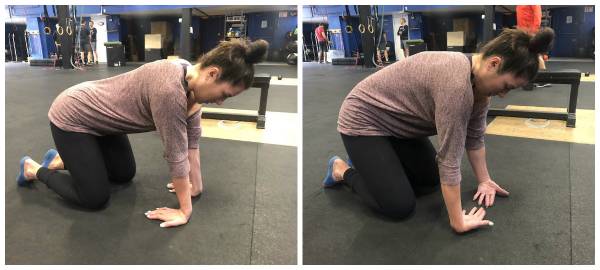
4. Frog Stretch
Though I often see people stretching their glutes, hamstrings, and quads, I rarely see people stretching their inner thighs and groin. This is what the frog stretch is great for. Don’t stretch until the point of pain, though, as you can aggravate your groin if you overstretch.
Hang out for at least a minute after a big squat day.
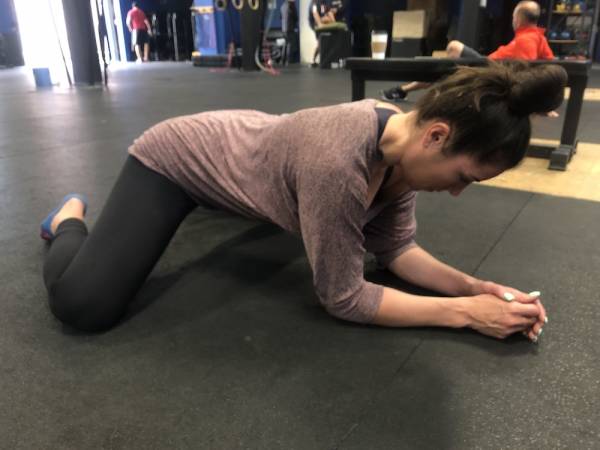
5. Shoulder Extension Stretch
While we often do shoulder flexion stretching, shoulder extension stretching is often forgotten about. I like this dowel shoulder extension stretch. The narrower your hands are on the dowel and the higher you can raise your hands, the deeper the stretch will be.
Spend 1 minute in this position.
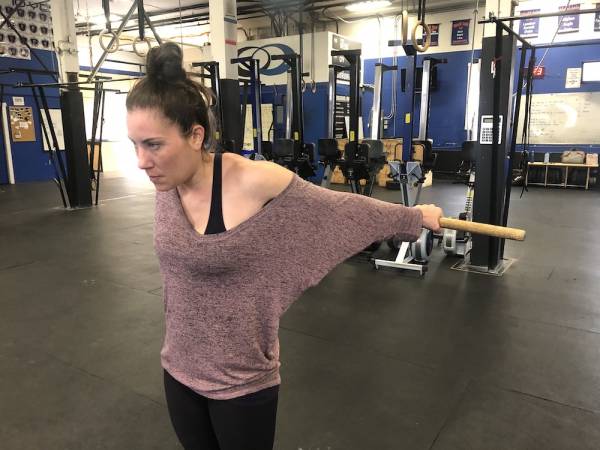
6. Dowel Sit
Grab a dowel and place it behind your knees and then sit down on your shins. Every 20 seconds, roll the dowel one revolution until you’re eventually down at your Achilles. This one will be slightly painful but in a good pain sort of way. Put as much bodyweight on the dowel as you’re able to handle without it being too painful.
Spend a solid 2 to 3 minutes working your way down your calves. If you do a lot of running or jumping, this one is particularly useful for your calves.
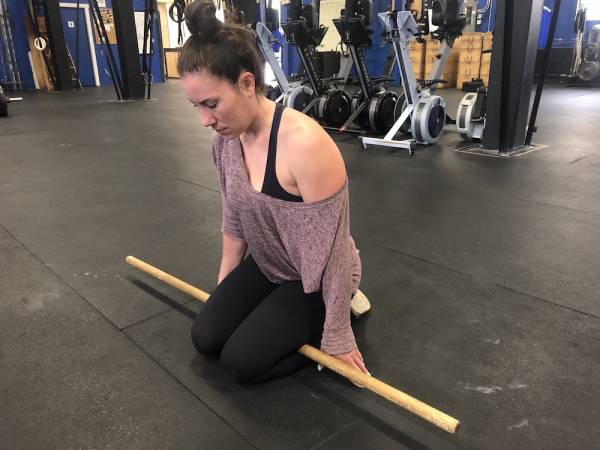
7. Low Back
This is just a dead-hang hold from a bar, but you keep your feet on the ground or place them on a box if the bar is too high. Keep your feet flat and bend your knees and let your entire bodyweight sink into your hips and ultimately into the ground. You should feel a release in your lower back.
Spend 1 minute or so in this position. This is particularly useful after a big hamstring and glute lifting session.






